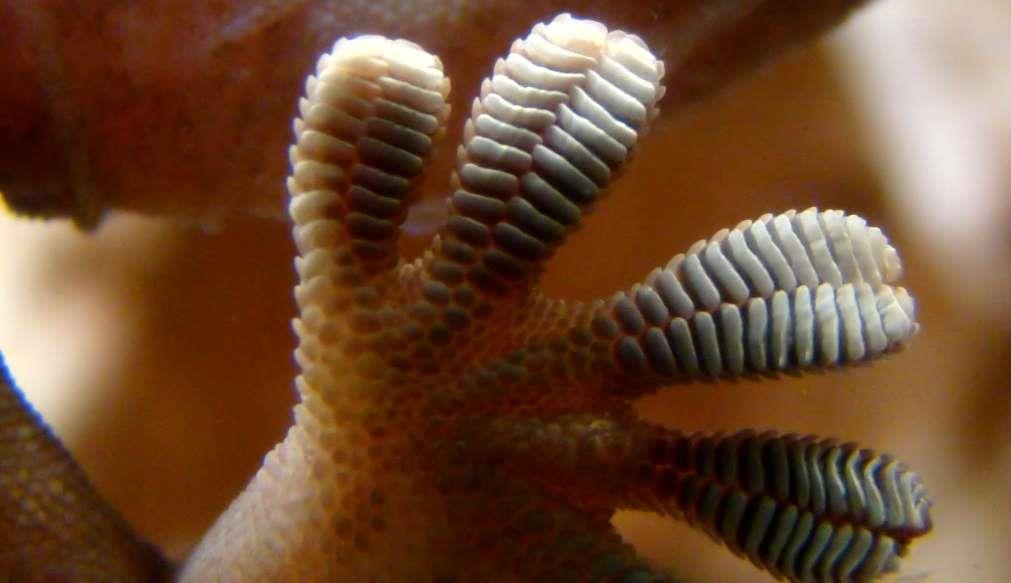November 22, 2014
An American engineer has made a pair of gloves inspired by geckos’ feet that could allow him to climb glass buildings, bringing super-hero fantasy closer to reality.

A gecko's foot seen on glass.
November 22, 2014
An American engineer has made a pair of gloves inspired by geckos’ feet that could allow him to climb glass buildings, bringing super-hero fantasy closer to reality.

A gecko's foot seen on glass.
Mechanical engineer Elliot Hawkes of Stanford University developed the gloves, which are designed to support a person’s weight, by mimicking the sticky pad of a gecko’s feet.
Rather than sticking to the surface, the gloves use friction to hold the wearer in place by increasing the surface area of the gloves with hair-like nanofibers. Hawkes and his colleagues are the first to successfully develop a material that could function in this way.
The gecko has been used as inspiration in past scientific exploration of the field. In 2011 Jeff Krahn, an engineer from Simon Fraser University in British Columbia, engineered a small robot that could hang from sheer glass using a similarly gecko-inspired mechanism. However, until now, engineering a material that could balance human weight posed a seemingly insurmountable challenge to researchers.
Species like the gecko are able to adhere to and climb vertical surfaces, but larger species are too heavy, meaning that even with the gecko’s pads, the pull of gravity would outweigh the friction holding them to the wall.
To work around this, Hawkes and his colleagues developed a reptile-inspired dry-adhesive material called PDMS microwedges. Hair-like nanofibers cling and react to a surface, flattening out when pulled downward and gripping by electromagnetic attraction.
"To work,” Hawkes says, “the surface you're climbing needs to be relatively smooth; like glass, varnished wood, polished stone, or metal.” It takes very little effort to attach and detach from the surface, according to Hawkes, and to make the gloves stick, “all you have to do is hang your weight”. The surface you’re climbing on must also be dry.
They then used a material called ‘shape-memory alloy’ to attach these PDMS microwedges to patches, which are adhered to a flat plate. When held in the hand, the plate distributes human weight effectively enough to climb with. According to their calculations, Hawkes and his colleagues say the gloves can support up to 200 lbs.
Kellar Autumn, a biomechanical engineer at Lewis & Clark College who studies gecko adhesion but was not involved in the project told Popular Mechanics: “This is a really big deal. I've been dreaming about this for about 15 years, since we first discovered the mechanism that makes geckos stick to walls. And this is proof that we finally understood it well enough to make a person climb a building."
Courtesy: Newsweek
















































































































